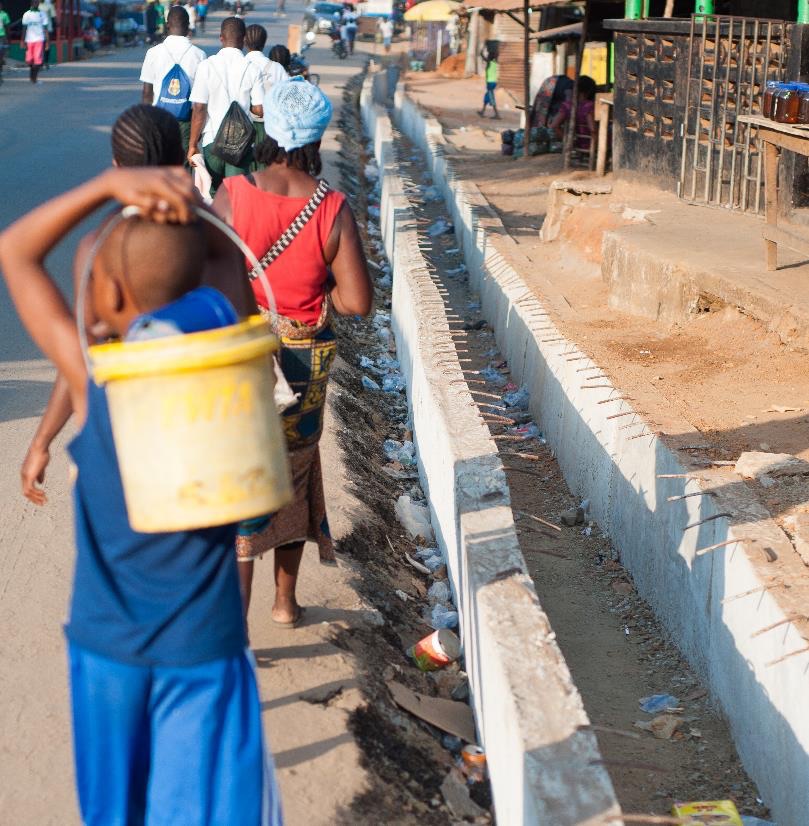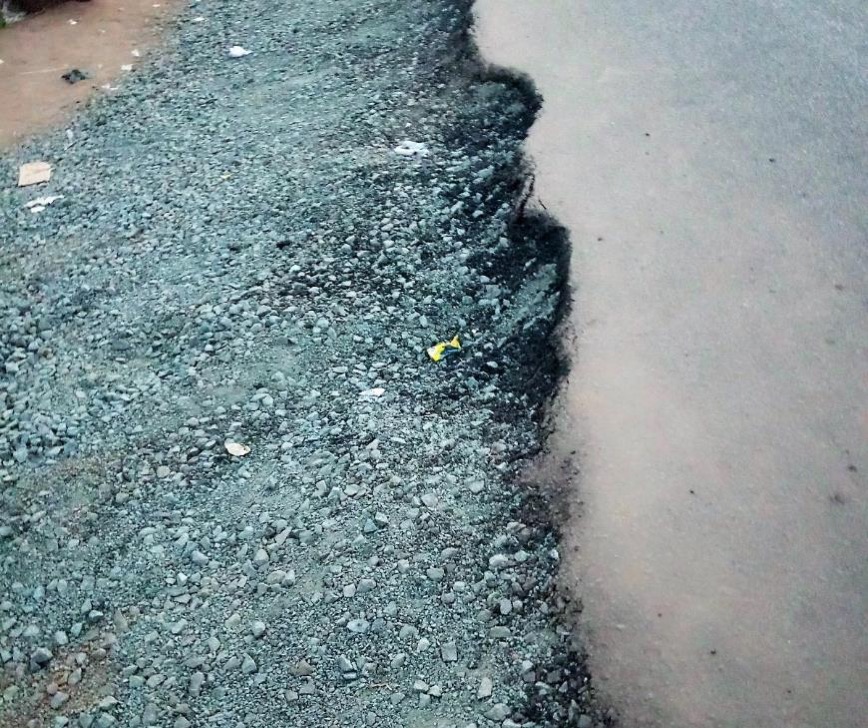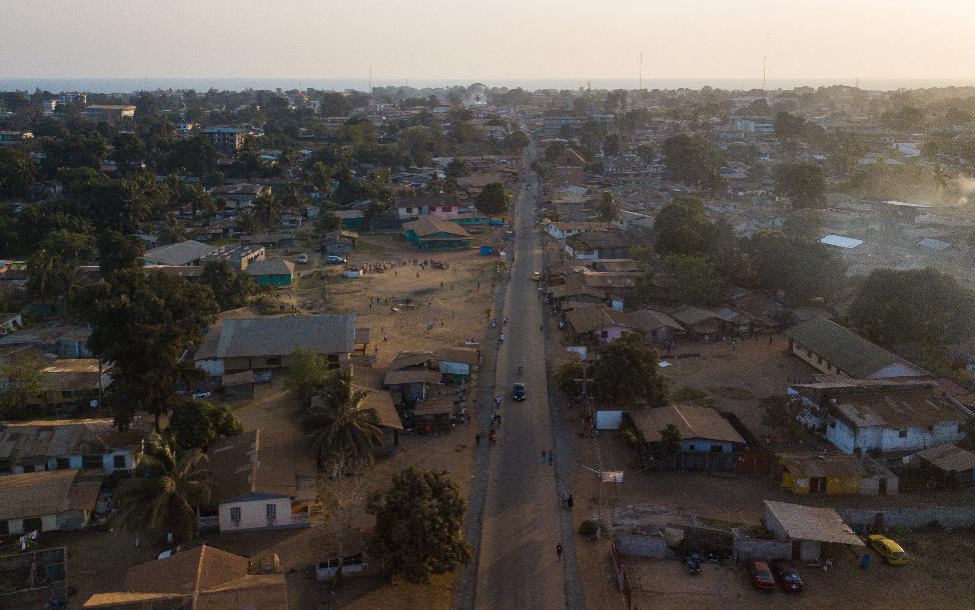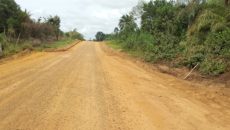CONGO TOWN, Montserrado – President George Weah’s administration has often celebrated paving kilometers of community roads as one of its major achievements since taking office. In fact, in his Annual Message to the National Legislature, the president touted the completion of the Doe Community and Chugbor roads as a reflection of his dedication to infrastructure.
“The government is undertaking a total of 150 km of community roads in 57 communities in Monrovia and its environs, as well as in Gbarnga, Bong County, and in Buchanan, Grand Bassa County. These roads are being paved with funding from domestic revenues generated from taxes,” Weah told lawmakers.
“I am pleased to inform you that more than 65 percent of community roads are near completion. Doe Community to Clara Town road and Chugbor Road are completed and dedicated.”
However, despite the president’s insistence that Chugbor Road has been completed, there are significant warning signs that the work is not yet complete or that it was built in a substandard manner. The road has no sidewalks. Moreover, the construction of its drainage system and access points are wanting.
The Bush Chicken took several photos of features of the road and provided them to an international road consultant, who concluded that the construction of the road is not yet complete.
Richard Smith, who has provided his expertise on several road projects in Liberia, said the Chugbor Road warrants additional attention.
“Just from looking at the pictures that you sent, it appears as though the [drainage] construction has been done in the wrong sequence,” said Smith when he examined a picture of the road showing the excessive spacing between the drainage and the asphalt.

Community members walk along Chubgor Road, next to the drainage. Photo: Lloyd Massah
“Really, you should construct the drains first, and then you construct the road up to the drains. And it looks like they’ve come along after doing the road and putting the drains – which means they have some patching to do at the edge of the road to join the road up to the drains.”
The current method in which the drainage was constructed means that the drains will not effectively remove water from the road surface. In fact, the water will gather up along the edge of the road before it reaches a level high enough to start emptying into the drains.

Another segment of Chugbor Road where the asphalt meets the drainage. Photo: Jefferson Krua
When asked whether there could have been a reason for the road to have been constructed in such a manner, Smith responded, “I can’t think of a reason, other than initially, they thought they weren’t going to put the drains in and then they were told afterward they had to. So you have to look at the original designs – whether the design had the drains initially or if it was an afterthought.”
Smith said the contractor can still fix the issue, although it will not be the most economical way to proceed.
“But they have to fill in the edge up to the drain and then resurface the road, so you’ve got a perfect road meeting the drain,” he added. “It’s more expensive because they’re doing some of the work twice. But you wouldn’t be able to tell until they’ve actually finished everything whether it’s been done properly or not, but it’s not an efficient way of doing it.”
The Bush Chicken asked Hassan Sidani, the operations director and CEO of Sidani Group Holding, to address Smith’s comments, but received no response in time for publication.
Attempts were also made to get a response from the Ministry of Public Works. However, no one agreed to an interview in time for publication.
When examining images of the entry points to the road, Smith, the road consultant, also drew attention to the breakage of asphalt caused by vehicles driving off the road. He noted that the depth of asphalt at the edge of the road should not have been so severe at driveways and other access points of the road.
“There should be an embankment – some gravel material sloping away from the road,” he said.
The breakage of asphalt at the edges of the road will likely be exacerbated by the effects of heavy rains and flooding during the rainy season.

At one of the access points to Chugbor Road, the road is breaking away due to a thick layer of asphalt at the edge. Photo: Jefferson Krua
A sign at the entrance of Chugbor Road shows that the project’s duration is 12 months and construction only began a little over three months ago.
Sidani Group Holdings is the same company that is constructing the main streets of Gbarnga. The company came under fire after Bong’s county officials halted the project when they found that the construction company had been constructing one of the streets with a width 2.2m smaller than originally required. Additionally, the company admitted to using sand that was much smoother than required for the project, causing cracks in the concrete pavement.
The company is also constructing the US$1.2 million Fairground road in Buchanan, in addition to numerous other community roads.
Featured photo by Lloyd Massah



